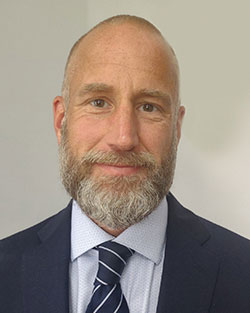Opinion: How To Level Up the MRO Workforce

The Bureau of Labor Statistics projects an average of more than 13,000 mechanics and technicians will be needed annually over the next decade.
Rich Geller is a director of business development at staffing services provider ActOne Group.

The Bureau of Labor Statistics projects employment of aircraft and avionics equipment mechanics and technicians to grow 6% by 2031 from 2021 levels. However, this increase does not take into account retirement of MRO mechanics, engineers and technicians, nor the need for technicians to run technology platforms added over the next decade.
“Leveling up” the MRO workforce has reached a critical point. We are witnessing a massive shift into a skilled technical labor category. Right now, the Bureau of Labor Statistics (BLS) forecasts about 13,100 openings for aircraft and avionics equipment mechanics and technicians on average each year in the next decade.
The data suggests that although there is a high volume of openings, the skills gap within the aerospace industry is an issue. Firstly, avionics programs are not well known to high school students who are opting for a career in the trades. Secondly, according to BLS data, the gap is expected to widen further for MRO technicians at every skill level as workers transfer to different occupations or exit the labor force.
There are three categories of labor:
Entry-level technicians They may or may not have a license when entering aerospace to gain experience.
Contractors They perform daily duties while mitigating risk to the customer. Some likely will convert to full-time employees, while others will continue to be an integral part of the operations workforce.
Experienced level These are airframe and powerplant (A&P) mechanics and engineers, technicians, supervisors and managers who are looking to level up.
A staffing services provider may be able to help MRO companies recruit, retain and manage workers in these three labor categories. Some staffing services providers will recruit and manage only a contractor workforce, while others can recruit experienced-level talent. A few agencies can manage all three categories under different models within the same organization.
Here are seven tips for partnering with a staffing services provider:
Preparation Understand screening questions when preparing to partner with a staffing agency. Begin with the basics: What is the staffing agency’s footprint? Is it national or local? What are its strengths and weaknesses within the regional market? In which job categories does it excel? What type of labor category does it provide? This will determine the size and scope of the services and expectations.
Experience With whom does the agency work? Does it work with the same levels of candidates that your organization is seeking? Is it dealing mainly with regional or major airlines, large MRO providers or small service companies? Look for the experience that fits your business and the candidates you seek.
Connections and Partnerships What connections and partnerships does the provider have with talent resources? Partnerships can include high schools, tech programs, A&P mechanic training schools, skill bridge partnerships and programs for ex-military candidates.
Customers With which industry customers does the staffing agency partner? What aerospace market data can it provide? Talent services partners often have a pulse on which candidates are being recruited for other clients. This is key, as some providers have a data pool of passive candidates (people currently employed but open to new opportunities) whom the staffing partner is constantly recruiting and interviewing.
Services There are many types of services, including master vendor, direct hire, talent sourcing and contract workforce management. Some MRO providers will opt for a master vendor, which includes standardized metrics of service, subvendor management, rate-card standardization and management of payroll with one point of contact and one management team. Others may include recruitment outsourcing, direct hire, contractor, onsite recruiting models and management alone with various sourcing options. Utilize the array of approaches, think outside the box and remember that data is key. Agencies may track where candidates come from (other employers, tech programs, schools) and where they are going.
Partnering Effectively After a short vetting process, partner with the services provider. This means constant communication with the hiring team, manager and leadership and reporting back mutually agreed upon key performance indicators and data. Create a partnership that is an extension of your human resources, recruiting or talent engagement team.
Expectations Listen and set clear deliverables and tracking of the services-based staffing model. A good staffing provider also will set clear expectations for your organization.
The coming decade in aerospace staffing likely will be challenging, but staffing services can provide great support to aftermarket companies.
